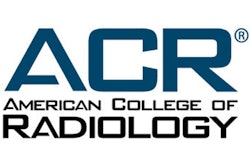Thursday, November 30 | 11:50 a.m.-12:00 p.m. | SSQ02-09 | Room S502AB
The combination of a deep-learning algorithm and visual stenosis grading could significantly boost the specificity of coronary CT angiography (CCTA) for detecting functionally significant stenosis, a Dutch team has found.CCTA is an increasingly important diagnostic tool for detecting coronary artery disease (CAD), and it is known for its high sensitivity and negative predictive value. However, it lacks specificity in indicating the functional significance of a stenosis, according to Dr. Robbert van Hamersvelt from University Medical Center Utrecht.
"This is mainly caused by overestimation due to calcium blooming and beam hardening," van Hamersvelt said.
The research group had recently developed an automatic, deep-learning algorithm that analyzes the left ventricle myocardium on rest CCTA images to identify patients with ischemia caused by a functionally significant stenosis. In this study, the team combined that method with simple stenosis grading to see how much that would improve CCTA's specificity for detecting functionally significant CAD.
"As CCTA is known for its high negative predictive value, we used visual stenosis grading to identify patients without a significant stenosis as functionally nonsignificant," van Hamersvelt said. "For the remaining patients, the automatic image analysis was used to indicate the functional significance of a stenosis."
In testing, the combined method more than quadrupled the specificity of CCTA for the degree of stenosis -- at the cost of only a mild drop in sensitivity.
"We think that the addition of deep-learning analysis of left ventricle myocardium to stenosis assessment holds the potential to substantially increase the specificity of CCTA and to decrease the number of patients unnecessarily referred to invasive [fractional flow rate]," he told AuntMinnie.com.





















